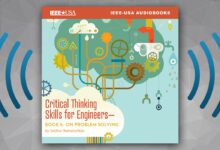
Finding and connecting dedicated people, in particular researchers from various domains, who are developing solutions to problems that matter is essential in this day and age. By highlighting technologies for humanitarian projects, the IEEE Global Humanitarian Technology Conference (GHTC) provides a stimulating and excellent platform for such an intellectual and, at the same time, very practical exchange.
At the 2016 GHTC conference, I presented an approach to how spare parts can be reconstructed out of images, and printed out by a normal or 3D printer. This way, one can create or order replicas of spare parts for overhauling infrastructure after natural disasters, using a handheld device like a smartphone or tablet. A structure from motion (SfM) algorithm is applied to a small number of images that show the relevant spare part from various angles, which can be captured by any kind of smart device. Based on the resulting dense 3D point clouds, a meshed 3D model is computed.
After determining the dimensions of the real part with a straightforward user interface, the meshed virtual model is scaled appropriately. To transfer this virtual 3D model back to the real world, our approach provides a 3D model format, for 3D printers, and a stacked paper format, for normal printers. In case no printers are available, the created 3D model can be transmitted “via any communication network, such as GSM, digital radio, or the internet ” to a nearby printer or warehouse.
My engagement as a volunteer firefighter strongly influences the idea of applying my current research “3D reconstruction, visualization, user interfaces, and computer vision” to real applications for solving real problems. In Germany, volunteers comprise the main body of the firefighting service, and only 106 cities have full-time firefighters. To be able to also respond to emergencies, such as floods, storms, and landslides, we organize small groups of local volunteer firefighters into special disaster response units. These units are sent out to disasters all over the country, without jeopardizing the fire protection of their hometowns. As part of such a response unit, we helped our colleages in Magdeburg fighting the 2013 Elbe flood. This experience, along with my growing expertise in multi-view, 3D reconstruction, sparked the idea of creating spare parts for repairing vital infrastructure after natural disasters, with minimal equipment.
Based on my study of biologically inspired computer vision at the Institute of Cognitive Science, I started to implement this idea. At GHTC 2016, I presented a first version of such a tool running on a tablet, demonstrating that spare part reconstruction with smart devices is indeed possible. Unfortunately, the complete reconstruction process currently takes about four hours on a tablet, not including the replica’s actual printing. Clearly, further research is needed to make this procedure applicable in real emergencies.
Motivated by my experiences at GHTC 2016, and its aim to link research with technology advancement for humanity’s benefit, I plan to preserve a strong link between my research and solving humanitarian problems. Within my Ph.D. studies I am focusing on the development of new, interactive 3D modeling techniques, as well as reconstruction methods, to generate CAD-like models from video footage.
To make the world a better place, we need to encourage more researchers to connect their important insights with people who know what is needed and necessary for solving humanitarian problems the IEEE Global Humanitarian Conference provides this opportunity.






